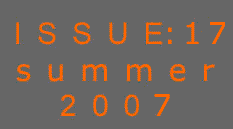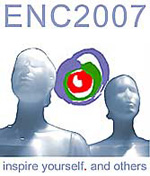
SFEN awards 2007 Grand Prix to joint CEA/EDF Pheonix team
At the French Nuclear Society’s (SFEN) General Assembly,
in Paris, on 20 June, the traditional “Grand Prix” for
scientific excellence was awarded to the joint CEA/EDF team
that runs the Pheonix rapid neutron type reactor. Joel Guidez
and Jean Guihard received the prize on behalf of the CEA
and EDF respectively. The prize was awarded in recognition
of the excellent operating performance of the Pheonix reactor,
which has enabled the carrying out of irradiation experiments
that are necessary to further research into the management
of radioactive waste. One of the main elements that contributed
to the excellent performance of the Pheonix reactor that
the SFEN jury particularly praised was the excellence of
the safety review that the plant’s team carried out
between 1994 and 2003. The review’s success was, in
the view of the jury, down to the close collaboration between
the CEA, EDF, AREVA-NP (formerly Framatome) and their respective
sub-contractors.
The Pheonix NPP in Marcoule began operating
in 1973 and has maintained a remarkable level of operation,
amply justifying the faith that experts had shown in fast
neutron type reactors. Conformity with the objectives of
the law of 31 December 1991 (relating to research into waste
management, with special reference to “research into
solutions that allow the transmutation of certain long-life
radioactive elements present in radioactive waste”)
required the launching of an irradiation research programme.
This was originally to be carried out in the Super Pheonix.
However, the premature closure of the Super Pheonix reactor
resulted in the CEA asking for an operational extension of
the Pheonix reactor so that it could take over responsibility
for the irradiation testing programme. The Pheonix reactor
fully lived up to expectations, proving to be a high-performance
unit – not only with regards to fulfilling the requirements
of France’s national research programme, but also for
the experiments it carried out within an international collaborative
framework.
The experiences gained from this programme will undoubtedly
be beneficial for the promotion of worldwide research into
radioactive waste management techniques.
Among the other prizes awarded at the SFEN
General Assembly were the “Jacques Gaussens” Prize,
which is awarded by the nuclear industry to young researches
in recognition of a significant contribution made by a research
study or thesis in a given field. This year the prize was
awarded to Jean-Philippe Mathieu for his thesis entitled
Analysis and micro mechanic modelling of the behaviour and
fragile rupture of steel 16MND5, taking account its micro-structural
homogeneity.
This year’s “French Atomic Forum (FAF) Prize,” which
recognises the contribution that a study in nuclear energy
can make to raising the knowledge and awareness level of
the public, went to Philippe Bronsart and Alexandre Viet,
for organising (in Aixe-en-Provence, in October 2006) a seminar
entitled What does the future hold for nuclear energy?contribution that a study in nuclear energy
can make to raising the knowledge and awareness level of
the public, went to Philippe Bronsart and Alexandre Viet,
for organising (in Aixe-en-Provence, in October 2006) a seminar
entitled What does the future hold for nuclear energy?
Finally, the “Jean Bourgeois Prize,” which rewards
the most valuable thesis dealing with the subject of safety
at nuclear installations, was awarded to two people:
Christian Muin, for his thesis entitled Study
of the behaviour of the fissile product ruthenium
within the confinement area of a nuclear reactor
in the event of a serious accident,
which he wrote while working at the IRSN (French
Institute for Nuclear Safety). The theses was co-financed
by IRSN, EDF and the CEA. |

|
and
Isabelle Ramière, for her thesis entitled Fictitious
methods of analysing elliptical problems bearing in mind
general limitations with regards to the numerical simulation
of di-phasic leaks. The thesis was completed within the framework
of a Neptune Project carried out in collaboration with the
CEA, EDF, AREVA-NP and the IRSN.






